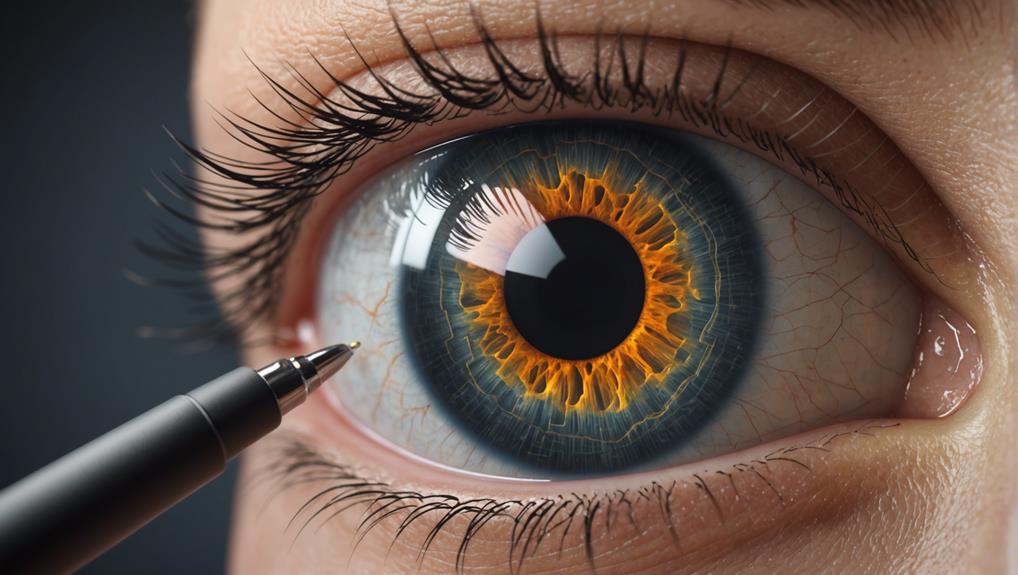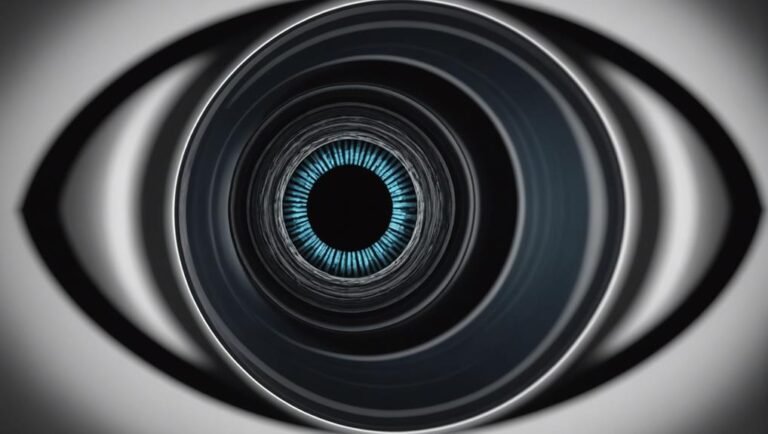Unveiling Glaucoma: The Vision Threat Explained
Glaucoma, a complex eye condition affecting millions worldwide, remains a silent threat to vision health. Understanding its intricacies, from causes to treatment options, is paramount in safeguarding one’s eyesight. As we explore the depths of this vision menace, the intricate interplay of eye pressure, optic nerve damage, and the various forms of glaucoma will come to light. Stay tuned as we uncover the mysteries surrounding this sight-stealing condition and explore the latest advancements in glaucoma management.
Key Takeaways
- Glaucoma damages optic nerve due to increased eye pressure.
- Early detection through regular screenings is crucial.
- Symptoms include blind spots, tunnel vision, and blurred vision.
- Different types require specific treatments and interventions.
- Treatment options range from medicated eye drops to surgical procedures.
Understanding Glaucoma and Its Impact
Glaucoma, a group of eye diseases characterized by damage to the optic nerve, poses a significant threat to vision due to increased pressure within the eye, making it essential to understand its mechanisms and impact on vision health.
Preventive measures play a critical role in managing glaucoma. Regular vision screenings are essential in early detection, allowing for timely intervention to prevent irreversible vision loss. These screenings help in monitoring eye pressure, evaluating the optic nerve, and identifying any signs of damage.
Causes and Risk Factors of Glaucoma
A key factor contributing to the development of glaucoma is the increased pressure inside the eye, which can lead to damage of the optic nerve and eventual vision loss. Genetic predisposition plays a significant role, with individuals having a family history of glaucoma at higher risk.
Environmental factors can also contribute to the condition. Glaucoma is often age-related, with adults over 60 being more susceptible. Lifestyle influences such as smoking, poor nutrition, and lack of exercise can increase the risk of developing glaucoma. Other factors like having a thin cornea, being nearsighted, or having diabetes can further elevate the risk.
Understanding these causes and risk factors is essential for early detection and management of this sight-threatening condition.
Recognizing Symptoms of Glaucoma
Early detection of glaucoma symptoms is essential for timely intervention and preservation of vision. While glaucoma is often asymptomatic in its early stages, recognizing symptoms like blind spots, tunnel vision, blurred vision, eye pain, or light sensitivity is important for seeking prompt medical help. Closed-angle glaucoma, characterized by sudden and severe symptoms, requires immediate attention to prevent vision loss.
Regular eye exams are crucial, especially for individuals at higher risk due to factors like family history, age, thin cornea, nearsightedness, or diabetes. Any sudden changes in vision should not be ignored. By being vigilant and proactive in recognizing these symptoms, individuals can take steps to manage glaucoma effectively and protect their eyesight for the long term.
Exploring Different Types of Glaucoma
One of the essential aspects of understanding glaucoma thoroughly involves delving into the different types of this eye disease.
Genetic predisposition plays a significant role in some types of glaucoma, such as normal-tension glaucoma. This form of the disease occurs even with normal eye pressure, emphasizing the influence of genetic factors.
Additionally, closed-angle glaucoma stands out as a type that requires emergency interventions. This severe condition can lead to sudden vision changes, blurred vision, eye pain, and light sensitivity. Immediate medical attention is critical to prevent permanent vision loss.
Recognizing the distinct characteristics and risk factors associated with each type of glaucoma is important for timely diagnosis and appropriate management.
Treatment Options for Glaucoma
Treatment options for glaucoma encompass various medical interventions aimed at managing the condition and preserving vision integrity. These options include:
- Medicated Eye Drops: These are commonly prescribed to lower intraocular pressure.
- Laser Surgery: Utilized for both open and closed-angle glaucoma cases to improve fluid drainage. If you’re seeking the best laser eye surgery in London, it’s essential to research and consult with experienced surgeon.
- Trabeculectomy: A conventional surgical method to create a new drainage channel for the eye fluid.
- Micro-Invasive Glaucoma Surgery (MIGS): A modern approach that enhances fluid outflow, reducing pressure within the eye.
Moreover, ongoing research is focusing on surgical innovations and emerging therapies to enhance glaucoma treatment outcomes and offer new solutions for patients with this sight-threatening condition.
Conclusion
In the intricate web of vision health, glaucoma looms as a formidable threat, silently damaging the optic nerve and jeopardizing sight. Like a stealthy predator, glaucoma strikes without warning, necessitating vigilance and proactive measures for early detection and treatment.
With a plethora of treatment options available, individuals can navigate the intricate maze of glaucoma management with hope and determination, safeguarding their precious gift of sight for years to come.







